Review for Welcome to the NHK: Complete Collection
Introduction
It's taken over four years for Welcome to the NHK to finally make it to UK retail. The thing is that we could have had it long ago; indeed we should have had it long ago. The first time that I saw Welcome to the NHK was at the start of the legal online anime streaming experiment. Just after Crunchyroll had aired The Tower of Druaga and Blassreiter, ADV put the first half of the series online in its dubbed form, and the show was quite an eye opener at the time. It was quite obvious then that ADV would be releasing the show onto DVD, and they started to do so in the US. When the UK release was announced for the summer of 2008, I had already put the money aside for the discs. And then ADV went bust. The online stream never went past the halfway point, and the US releases ended just one disc short of conclusion. In the UK, ADV was wound up as an active concern the month before volume 1 was scheduled for release here, and that, I thought was that.
Thankfully for US fans, where ADV faltered, Funimation was there to pick up the slack. They released the final disc of Welcome to the NHK, and then they straightaway re-released it as two half-season boxsets. By this point, my need for the show was rapidly becoming an obsession, so I pushed the import button, as did several Region 1 capable fans. Of course a show as brilliant as this one wouldn't be left lying fallow for too long, and a Region 2 release would happen in short order, or so I thought. The trouble is that a Region 2 PAL release requires a Region 4 PAL release first, for the discs to be mastered and authored for the format. UK companies usually work hand in hand with Australian companies to do this to share the costs. And for 2 years it seemed that no Aussie company wanted to touch Welcome to the NHK. It was as if a conspiracy was keeping this series from UK fans. Fortunately, last summer Siren Entertainment stepped up to the plate, which is why MVM are now, finally releasing Welcome to the NHK in the UK. The thing is, this release may just convince us early Region 1 adopters to double dip. It's a conspiracy to part us from our cash, I tell you!
Conspiracy lies at the heart of Welcome to the NHK, although it may all be in the mind of protagonist Tatsuhiro Sato. Sato is a NEET, he's not in employment, education or training, and hasn't been since he dropped out of college four years previously. In addition to that, he's a hikikomori, suffering from acute social withdrawal. He's basically locked himself away in his apartment, rarely venturing out, and shunning any human contact whatsoever. Fears of failure, rejection and ridicule dominate his life, and he's paranoid to the point of hallucinations, seeing conspiracies against him in every corner. In fact, he attributes his isolated state to the NHK, the Nihon Hikikomori Kyokai, an organisation that through an endless diet of anime, manga and merchandise wants to create a legion of self-loathing otaku in the world. The only human contact Sato has is with his next-door neighbour, even if it is just through a thin separating wall. All day and every day, the same anime theme blares from a stereo, and Sato nurses illusions of going round in righteous fury to confront him, only to chicken out as soon as he gets to his front door. Then one day, there's a knock on that door. Fearing an irate utilities bill collector, Sato opens it. It's his first meeting with a young girl named Misaki Nakahara, and it may be his one chance at a cure.
MVM presents this 24 episode series across 4 discs thus…
Disc 1
1. Welcome to the Project!
2. Welcome to the Creator!
3. Welcome to the Beautiful Girls!
4. Welcome to the New World!
5. Welcome to Counselling!
6. Welcome to the Classroom!
Disc 2
7. Welcome to the Moratorium!
8. Welcome to Chinatown!
9. Welcome to a Summer Day!
10. Welcome to the Dark Side!
11. Welcome to the Conspiracy!
12. Welcome to the "Off" Meeting
Disc 3
13. Welcome to Paradise!
14. Welcome to Reality!
15. Welcome to the Fantasy!
16. Welcome to Game Over!
17. Welcome to Happiness!
18. Welcome to No Future!
Disc 4
19. Welcome to the Blue Bird!
20. Welcome to Winter Days!
21. Welcome to the Reset!
22. Welcome to God!
23. Welcome to Misaki!
24. Welcome to the N.H.K.!
Picture
After a minute or so of inescapable logos, we get to the animation, and it's a world away from the Region 1 release that up to this point I had been cherishing like a prize possession. The Region 2 discs, sourced via Australia's Siren Entertainment, get the PAL conversion treatment that so much modern anime gets. That means a 4% speed-up to be sure, but it also means smooth animation, the use of the higher resolution, and a lack of ghosting and judder. It's also a revelation compared to the Region 1 NTSC discs. Those discs suffer from interlacing artefacts, combing, and aliasing. The colour balance is oversaturated, shades appear neon, the contrast is excessive, there is a haze of overexposure that obscures the image, all flaws that I was happy to live with knowing there was no alternative. Well, now the alternative is here. There's no interlacing visible on the PAL discs, the resolution is higher, detail is better recreated, and the colours are sensibly balanced. Also, the episodes take up more room on the disc, and the average video bitrate is some 20% higher. I was seeing detail and depth that I never knew was there, the artwork in Welcome to the NHK finally became apparent, and it's a far more intricate and finely wrought animation than the R1 discs display. The better contrast levels also diminish that odd vertical banding that is so obvious on the US discs, although it still becomes visible when these discs are up-scaled. The only issue here is some odd moments of shimmer on fine detail. I doubt that I'll ever watch those Region 1 discs again.
Welcome to the NHK is a remarkable animation, although it is starting to show its age, with the limited TV animation budget showing up in characters that occasionally drift off model. It's very much set in the real world, with realistic character designs, and a marvellous attention to detail, especially when we venture into the world of the otaku. Yamazaki's room is a cornucopia of fandom delights, an Aladdin's cave of games, manga and figurines, and it must have been a nightmare to design and animate. Sato's apartment on the other hand is a run down, trash filled environment, discarded Kleenex and cigarette butts, which must have been just as complex. The animation is lively and vibrant, with a distinct absence of static scenes, and of course there are the various journeys into hallucination, paranoia, and the edge of sanity to make things even livelier. The one flaw is a certain inconsistency in animation style, but it almost seems to suit the volatile mood of the show, switching from euphoria one instant, to dark depression the next.
Sound
You have a choice of DD 2.0 English and Japanese, with optional translated subtitles and signs. I didn't listen to much of the dub for this one, having heard it when ADV initially streamed the first twelve episodes on Crunchyroll in 2008. It's a pretty good dub though, well acted and hitting the right emotional notes, although Yamazaki's voice is a little stereotypical. As usual my preference is for the Japanese track and I had nothing to complain about here.
The music for this show is really quite special, with a couple of memorable themes first and foremost. However the incidental music works wonders in establishing an atmosphere and reflecting an emotional mood, going from gentle acoustics to orchestral pieces, with some choice songs as well. It's all very evocative.
An odd observation here is that the DD 5.1 English track has been down-mixed to DD 2.0 by Siren Entertainment. Obviously it would have had to be reworked for the 4% speedup, but given that the materials existed (as far as I know) only as a 5.1 audio track, the extra work to actually 'degrade' the audio seems excessive and wasteful. That said, ADV would have created the 5.1 mix from the stereo elements supplied by the Japanese licensors, and as such is really just the 2.0 mix given extra room. Certainly, I gave both the 5.1 and 2.0 audio tracks a spin, comparing Region 1 and Region 2, and while the 5.1 audio does have a greater spacial separation to it, giving the audio more room to breathe, the 2.0 stereo mix when pro-logicked up is pretty close behind when it comes to bringing across the mind-warping hallucination sequences.
Siren Entertainment's authoring has also changed the subtitle streams on these discs, now in a smaller, more discrete white font, closer to the bottom of the screen. Their ethos appears to be to obscure as little of the onscreen image as possible, whereas ADV had no such compunction. ADV's subtitles are big, bright and yellow. More noticeably, for their caption streams they create captions that mirror the style of the text they are replacing, and are directly overlaid over the Japanese text, obscuring it completely. Siren instead simply translates that text to a small, white italic font, placed to the side or above in a clear area of the screen. It's a better way of doing things, although once or twice the font was a little too small to be easily legible.
The dropout I experienced on the Region 1 disc 1, in episode 5 doesn't happen on the R2 disc. I did notice this time around that on Disc 1, 1.11:36 into the programme, a line of Japanese dialogue was distorted into a squawk. Looking back at the region 1 disc, I realised it happens there as well, and appears to be an error from when the actual Japanese dialogue was originally recorded.
Extras
I haven't seen the packaging for this title, but the discs themselves come with (slightly) animated menus, while the only extras are on disc 4, the textless credit sequences. Only the first textless credit sequence is on this disc though, the Puzzle Extra Hot version of the theme used for the second half isn't, although the animation for both versions is exactly the same. All three end credit sequences are here, the first half, the second half, and the final episode ending.
Conclusion
This is now the fourth time I have watched Welcome to the NHK, and each time that I watch it, I find more and more to appreciate. It just is one of the best stories ever animated (although that doesn't equate to best animation). Nevertheless, I feel that I'm on steady ground saying that this is the best anime that will be released in 2012, and Welcome to the NHK comes out on January 9th. The first thing that you have to know is that apart from at the most superficial level, this show is unlike any anime you have yet seen. This is a story set in the 'real' world, about real people with very human problems. The world isn't going to need saving, there are no magical girls, no giant robots, no vampires. It isn't about the fan service, the moe, the cuteness or the mascots. The second thing is that it may prove to be uncomfortable viewing for fans of anime, indeed also when it comes to fandom and obsession in general. Welcome to the NHK can on occasion hold up a stark and brutal mirror to viewers that can cause us to question our obsessions and our passions. Welcome to the NHK is a show about alienation, isolation, and obsession, it's about social withdrawal, depression, paranoia and anxiety. Ultimately it's about mental illness, and it's about suicidal thoughts. It's also downright brilliant, at times painfully funny, and an utterly gripping exploration of character from beginning to end.
Don't worry if you miss the usual themes of anime, the demographically driven, out-of-place sexuality, the giant robots, magical girls, moe and fan service that I mentioned earlier, as while the 'real' world of Welcome to the NHK has no place for them, the characters' obsessions certainly do, their imaginations certainly have the scope to run riot, and with Sato's hallucinations and paranoia contributing much to the visual energy of the show, those elements that fans come to anime for are certainly there. It's just that the context in which you see them may cause you to question just why you appreciate such aspects of anime in the first place.
Tatsuhiro Sato is the central character, and it's he that exhibits the anti-social, NEET withdrawal. He's the hikikomori who after an awkward day at college, simply dropped out of school, dropped out of life, and sealed himself into his apartment, subsisting on a diet of late night anime, and convenience store food, supported by an allowance from his parents. He's paranoid, delusional, and terrified of any social situation whatsoever, his fear of rejection and disapproval making him shun any form of human contact. He can't even build up the gumption to go next door to confront his neighbour, who has been blaring out the same anime theme song from his stereo for the last month, and making Sato's life a misery.
It's a shame, as he would otherwise have learned that his neighbour is his former schoolmate Yamazaki. Yamazaki represents the idea of obsession taken to extremes, as his passion for anime has made his apartment an Aladdin's cave of DVDs, books, games, and memorabilia. From an early age, his experience with people has also made him a little antisocial, although that manifests in his utter insensitivity to others, and an inability to empathise, rather than any tendency to withdraw. His one negative experience with girls has also made him a touch misogynistic.
It's when Misaki Nakahara knocks on Sato's door that his life is destined to change. Perhaps it's because of his experience with fantasy girls in anime that he doesn't question Misaki's appearance too deeply, as she arrives when he is in the depth of despair about his withdrawn existence. She's like the angelic female figure in shows like Ah My Goddess, the selfless, pretty, potential love interest, whose sole reason for being is to improve the life of the hapless loser male protagonist. Suddenly this teenage girl is telling Sato that she can help cure him of his social withdrawal, and like a drowning man grasping for any chance to live, Sato grabs the first line that is thrown at him.
He's still sceptical enough to try and convince her that he is not a total loser, and so he lies to her, telling her that he lives and works from home as a creator. Learning that Yamazaki is at school in Tokyo, learning about video game design, the lie grows when he asks Yamazaki to help him with a piece of software that he can pass off as his own. The two wind up working together to create a video game, although given their shared antisocial tendencies, it's an erotic game that they try to create. And so Sato's rehabilitation begins, although given Misaki's blatant lack of qualifications in psychoanalysis, there are as many setbacks as there are steps forward.
Along the way, we also encounter more of Sato's former school friends four years on, all dealing with their own problems. Hitomi was Sato's upperclassman, and together they comprised the school's literature club. It was a club that spent more time playing cards than reading books, and it was Hitomi that introduced Sato to the idea of conspiracies and machinations behind all the setbacks in their lives. When Sato encounters her again, she's depressed to the point of numbing her existence with a pharmacopoeia of prescription drugs, unable to accept anything positive in her life because she fears that it will be snatched away, as she's certain that she doesn't deserve it. Despite the positivity in her life, a steady job, and a confident and well-off boyfriend, the slightest setback sends her into despair.
Then there is Megumi, who was Sato's class representative in school, a girl with a get up and go attitude, whose energetic enthusiasm only served to annoy, and who tried her best despite the class's lack of zeal. You would have expected her to excel after leaving school, except that she becomes the other side of the coin in Welcome to the NHK, the family that has to deal with social withdrawal. Her brother is a NEET, and at a stage far more advanced than Sato. Megumi came to Tokyo to go to college, and wound up living with her brother, who had at that stage already dropped out. Then their father became ill, unable to support them, so she had to drop out and get a job to support her brother, hoping that he might be cured with her help. He only got worse, and the jobs she got didn't pay in the end. When Sato encounters her again, she's trapped in a pyramid scheme, trying to find other patsies to form the bricks below her in the pyramid so that she can finally get out of debt to the higher bricks and start earning some money.
Of course there is Misaki, the guardian angel, the magical girl that suddenly appears with all the answers, and who looks cute enough that the hapless male may just fall in love with her in the process. Except that Misaki doesn't have all the answers, and may need helping most of all.
As Misaki tries to rehabilitate Sato over the course of the series, he winds up taking every wrong turn imaginable, winding up deeper in obsession and paranoia, exploring all the fringes of society trying to hack his way back in. First he teams up with Yamazaki to create an erotic video game. Researching what that is means getting addicted to 'gal-games' himself, before graduating onto Internet porn, before trying to 'cure' himself by trying to grab up-skirt shots of passing schoolgirls. He ventures into the shady world of online suicide cults, tries to make money by venturing into real-money-trading in an online RPG, only to find himself a new addiction, and falling in love with an online character into the bargain… and then he gets caught up in Megumi's Mouseroad pyramid scheme. In the middle of all this, his mother decides to visit, and he then has to pretend that he has indeed got a job, and a girlfriend, and is getting married too, so there's no need for him to return home, and keep sending the maintenance cheques thank you very much…
This is an adult anime series, and not just in terms of sex and the swears. Although in a show that has an episode devoted to the perils of Internet porn addiction, there's certainly enough of what would be termed fan-service to sate the lewdest of 15-rated appetites. It's just that this isn't service in the truest sense of the word. It isn't to perk up the viewer, it's all in the context of the story and the characters, and may indeed serve to make the viewer more uncomfortable than excited. The most adult thing about this series is the story, the concepts that it explores, and the dark side of society that it tries to depict. Alienation, isolation, and depression aren't the happiest of subjects, and mental illness, even depicted with the humorous edge of Welcome to the NHK, doesn't make for happy family viewing. This is edgy and discomfiting stuff, made all the more relevant as these are feelings that are common to everyone. Who hasn't felt depressed, isolated, weighed down by society at times? Who hasn't felt put upon as the victim of a global conspiracy? Certainly these feelings aren't as strong as those felt by these characters for the majority of us, they most definitely aren't as constant, but the ability to empathise and understand what these characters go through is certainly there, which makes Welcome to the NHK the most relevant, honest and realistic anime I have ever seen. It can bring a tear to the eye because of its honesty, and I can see aspects of my own insecurities brought to life in its characters. That is just brilliant storytelling.
If like me you got impatient for this brilliant show and imported the Region 1 discs from Funimation when they were released, do yourself a favour and consider double-dipping. The image quality on these region 2 discs, sourced from the Australian Siren release blows the Region 1 discs away. The colour balance and saturation, exposure, resolution, and smoothness of animation is such that it feels like a totally different animation, revealing so much more of the detail than before. Of course everyone should own Welcome to the NHK, certainly every anime fan. It may at times hold up a brutal mirror to the perils of fan obsession, and it may even make you think twice about your passion for anime, as it does to me every time that I watch it. It also makes me feel that such an obsession is justified, if every few years, someone in Japan makes a show this damned good!
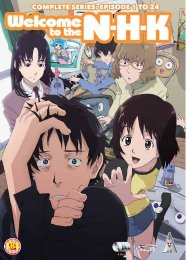

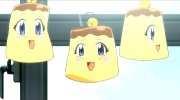
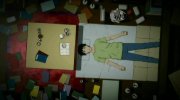
























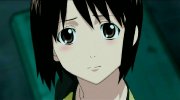
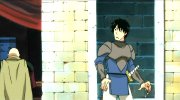

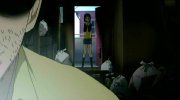



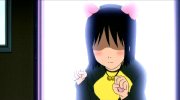


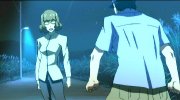

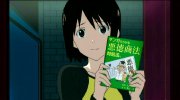






































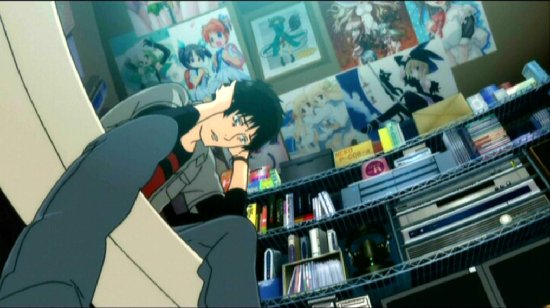









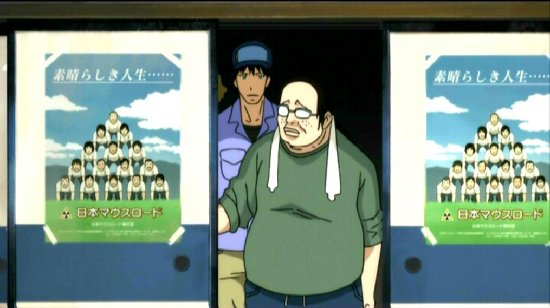




Your Opinions and Comments
Be the first to post a comment!